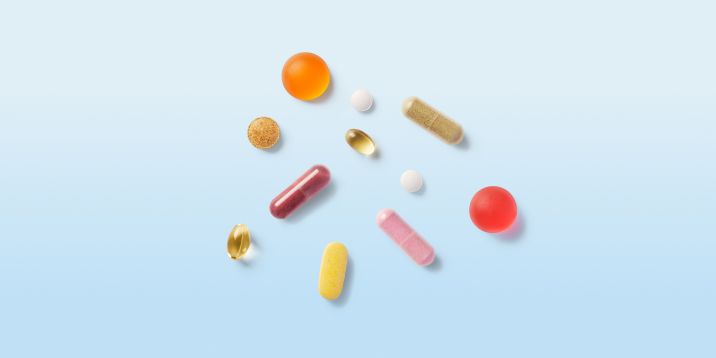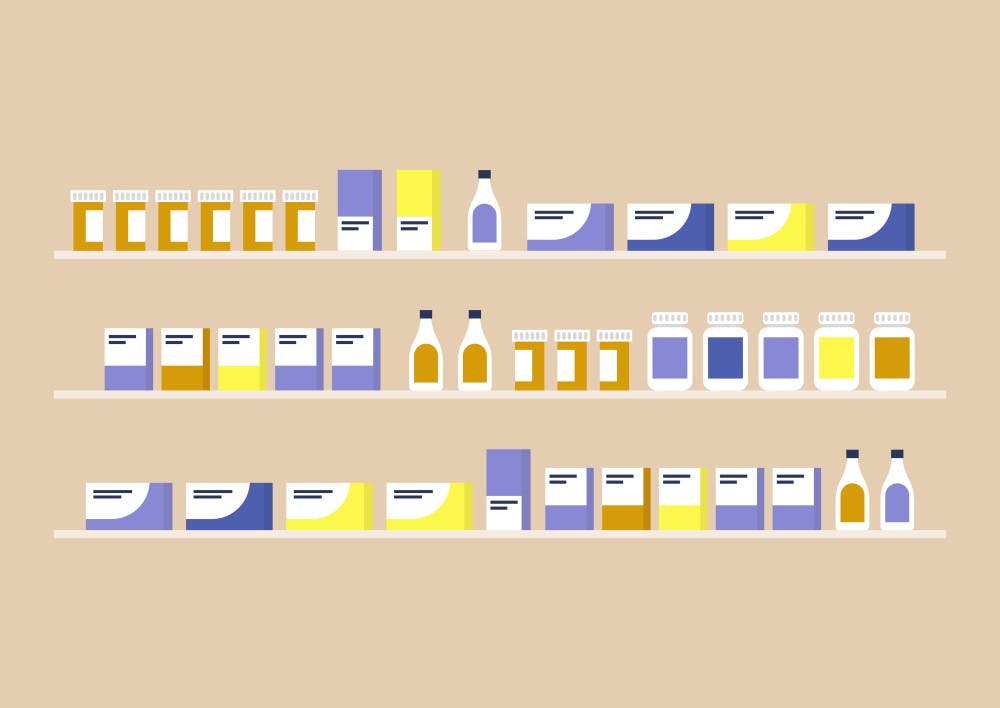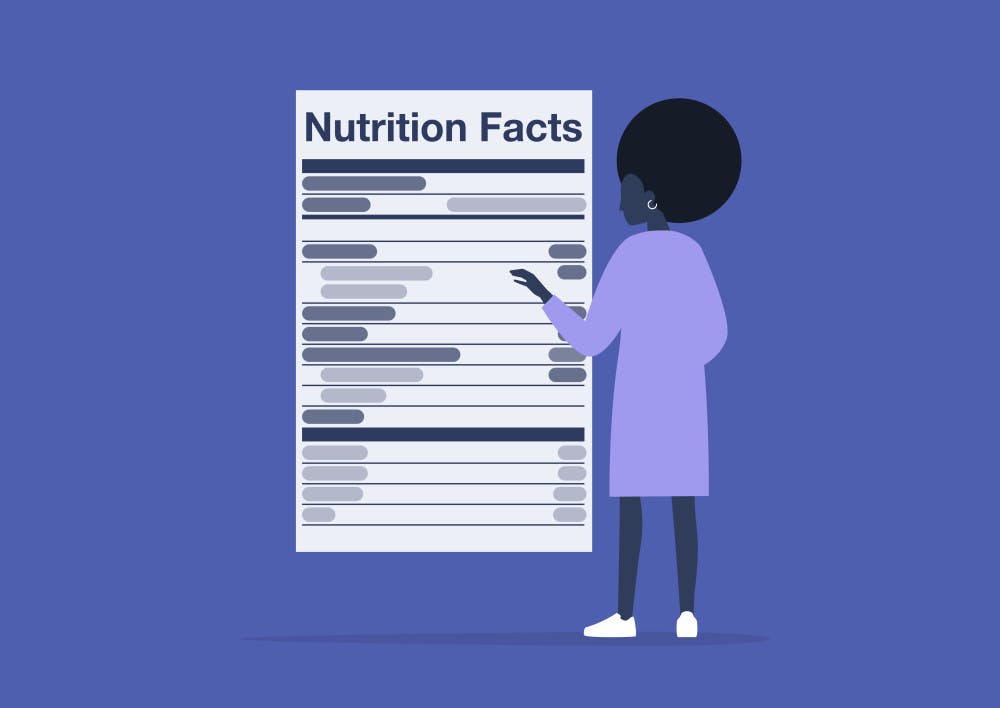Putting the industry under the microscope
From beetle juice and rancid fish oil to industrial lubricants, is there something hiding in your supplement?


In North America, the supplement industry is worth an estimated $50bn a year. And yet, there’s no requirement for anyone producing or selling supplements to register with the FDA. There’s a total lack of regulation.
This attracts shady business. There’s a profit to be made, and no rules that need to be followed. It’s a race to the bottom in terms of quality of ingredients, and quality of experience. Of course, not every company is disreputable. Not every company engages in bad practice, or looks to cut costs at the expense of the customer. But in the opaque world of press releases, jargon, and unpronounceable ingredients, you’ve got little option but to blindly trust whoever’s making the supplement. And that might be a faceless multinational, whose only obligation is towards the shareholders pockets.
So we’re on a mission to put the industry under the microscope. To uncover the dishonest practices, the plummeting quality, and the unacceptably poor standards. Because you put supplements in your body every day, there needs to be transparency on what they contain, on what you’re eating. And as a rule of thumb, if you wouldn’t eat it, don’t.
Inactive ingredients to avoid

Think of a standard vitamin D tablet—a little white oval containing however many micrograms of vitamin D. Everything else in that tablet is an inactive ingredient, used to facilitate the manufacturing and storage processes. There’s nothing inherently wrong with inactive ingredients (and there will always be at least one present), but the more there are in a supplement, the more chance you’ll find something you’d rather not think about.
Titanium dioxide—the tip of the iceberg
Titanium dioxide, also known as titania, is a compound commonly used as a pigment. It gives off a brilliant white colour, so has been used as a colouring for tablets. It’s also used in paper, plastic, ink and, perhaps most famously, in oil and acrylic paint, where its opacity and colour make it a vital part of the palette.
However, in 2021, the European Food Safety Authority (EFSA) declared that titanium dioxide could no longer be considered safe for humans, with the organisation listing genotoxicity (the ability of a chemical substance to damage DNA) as a concern. Now, it’s important to note that EFSA doesn’t have the ability to ban the use of titanium dioxide as a food additive, but as the premier advisory committee on food safety in Europe, you’d expect its findings to carry a lot of weight.
Unfortunately, many supplement companies seem to think otherwise. They aren’t bound by any regulation, and titanium oxide is a very useful ingredient—it’s cheap, abundant, and the colour is a useful psychological tool, giving the product the semblance of cleanliness. So unfortunately, it’s still present in many supplements, despite the fact that it is not ‘considered safe’.
A quick search of a leading supplement retailer in the UK shows that more than 170 products contain titanium dioxide. That seems like a problem.
Aesthetic additives
One of the reasons titanium dioxide is so popular is the incredible white it gives to a tablet. But it’s far from the only dodgy additive included for aesthetic reasons.
Another to be aware of is shellac—the same stuff that goes on your nails as a topcoat. It gives some supplements a shiny, glazed appearance, and the marketing teams love it for that. A shiny, attractive pill is a lot easier to sell than a dull, boring one. Unfortunately, shellac doesn’t have the most appealing origin. It comes from a resin secreted by the lac beetle, which is then industrially refined.
Bulking agents
Bulking agents are another common category of inactive ingredients. They do what they say they do—bulk out the supplement so that it appears larger (and in our subconscious, more effective). In itself, there’s nothing inherently dangerous, just a little misleading, but the lack of regulation means that no one tests what’s being used as a bulking agent.
One of the more popular examples of a bulking agent is talcum powder, which also helps hold tablets together. It’s often hidden behind the scientific name, magnesium silicate, but it’s still talc—in general, the less talc you eat, the better.
There have also been concerns over the safety of talcum powder in the past, with Johnson & Johnson forced to pay almost $5bn in damages over health concerns. They seem to have cleared up their act, but shady sources of talc are something to be wary of.
Leftovers from the factory
When scanning a supplement’s list of ingredients, you might expect all those chemicals to be there for a reason, to somehow benefit you. But that’s not the case. A lot of what you’ll find in a cheap supplement is left over from the manufacturing process—chemicals that help the machines run quicker, and don’t need to be removed before it goes into your daily dose.
One of the most common of these is magnesium stearate, an industrial lubricant that stops things from getting clogged on the production line. That’s the only reason it’s in there. Its sole purpose is ensuring higher output and cycle times in the factory—a cheap way to ensure mass production and minimum standards.
Know your active ingredients

Everything in a supplement that isn’t an inactive ingredient is, unsurprisingly, an active ingredient. These are the parts of the supplement that should be having an impact. But not all active ingredients are equal, and when you’re looking for a quality supplement, it’s essential to make sure you know what the active ingredients are, and where they come from.
Quality
Ensuring the quality and effectiveness of any supplement ingredient should be your first concern. If it isn’t going to make a difference, you’re just throwing money away. So you need to look out for the specific form of the nutrient contained in the supplement. The form, or compound, of an ingredient will determine how easily it will make its way into your bloodstream (this is called bioavailability) so that it can start taking effect. Knowing the compounds present in a supplement is as important as knowing the basic nutrients.
For example, everyone knows about the importance of B12. The most common form of B12 used in supplements is a synthetic compound called cyanocobalamin. This is very difficult for your body to absorb in the first place, and then your body needs to convert it to the active form of the vitamin, methylcobalamin. This takes work, and is an inefficient process. So after all that, only a small proportion of the B12 in the supplement can actually have an impact.
But a high-quality supplement can contain methylcobalamin in the first place. This is easier to absorb, and then doesn’t need to be converted before it can be used. It’s not as friendly on the profit margin, but much better for the customer.
These decisions get made for every active ingredient in a supplement. When added up over 20+ nutrients, the difference in how much work your body needs to do to access those nutrients adds up very quickly.
Quantity
There are standards on how much of a nutrient a supplement needs to contain before it can list it among the ingredients. That is undoubtedly a good thing—in order to have an impact, a supplement needs to have the right amounts. But unfortunately, the standards are hopelessly out of date. They’re based on the nutrient reference values (NRVs) developed in the twentieth century, despite the world being quite different these days.
When it comes to doses, there are two things that could be an issue. The first is a supplement not containing an adequate amount of a nutrient. Even if there is actually enough to post a health claim on the label, there might not be enough for you to feel anything.
The other potential problem is a supplement containing too much of a nutrient. This is particularly important with fat-soluble vitamins, such as vitamin A, which build up in your cells over time. So it’s always important to check the quantities of any nutrient against the safe upper limit (SUL) as determined by local regulatory agencies.
Ethical sourcing
Where do nutrients come from? When it comes to diet, we know—iron from red meat or leafy green veg, vitamin C from citrus—but on an industrial scale, it’s different. Supply chains are more obscured, and finding out exactly where your vitamins come from is a bit trickier.
For example, most supplement companies aren’t processing millions of eggs to gather the vitamin D3 (the more bioavailable form of vitamin D). Instead, most cheap supplements will derive vitamin D3 from wax gathered from sheep’s wool. After being collected, the wax is treated with various detergents and solvents until it’s in a fit state to be used in a supplement.
Omega 3 also illustrates the point. Fish oil extracted from liver is one of the most common forms of omega 3, but almost all of it comes from the Peruvian anchoveta—the most caught fish in the world, and one at risk of being overfished. Once harvested, the oil goes to China for extraction and distillation, and then is shipped back around the world. The long process means that by the time it reaches the shelf, the oil is often rancid.
Neither of these need to be the case. You can get vitamin D3 from sustainable lichens, which grow naturally on the sides of trees and rocks. And you can get omega 3 directly from plant-based algae, which is actually where fish get their omega 3 in the first place.
Different people will have different requirements for their supplements, and what sources they deem acceptable. But the current state of the industry makes any form of research virtually impossible. That needs to change.
Sustainability
Given the size of the supplement industry, and the global nature of the supply chain, a commitment to sustainability should be non-negotiable. But that’s rarer than you think. Exploiting natural resources, unjustifiable waste, and reliance on single-use plastics are the norm.
We don’t think that’s all right. We think that companies have a responsibility to their customers, and the planet, to do everything possible to reduce carbon footprints and their impacts on the planet.
Large corporations that pump out low-quality, cheap supplement pills, don’t think like that. For them, everything is about the bottom line, and unfortunately, that means sustainability gets sacrificed. It’s time to demand more.
It’s a bleak picture. The supplement industry is not in a good place. But better is out there. High-quality supplements, using superior ingredients from ethical sources in effective doses, exist. It’s just a case of doing your homework, and making sure you know what you’re taking. Trust no-one, including us. If the Vitals⁺ doesn’t make the cut, then don’t take it. You shouldn’t have to compromise.
So raise your standards. Ask more questions. Find out exactly what’s in the bottle. And if you wouldn’t eat it, don’t.